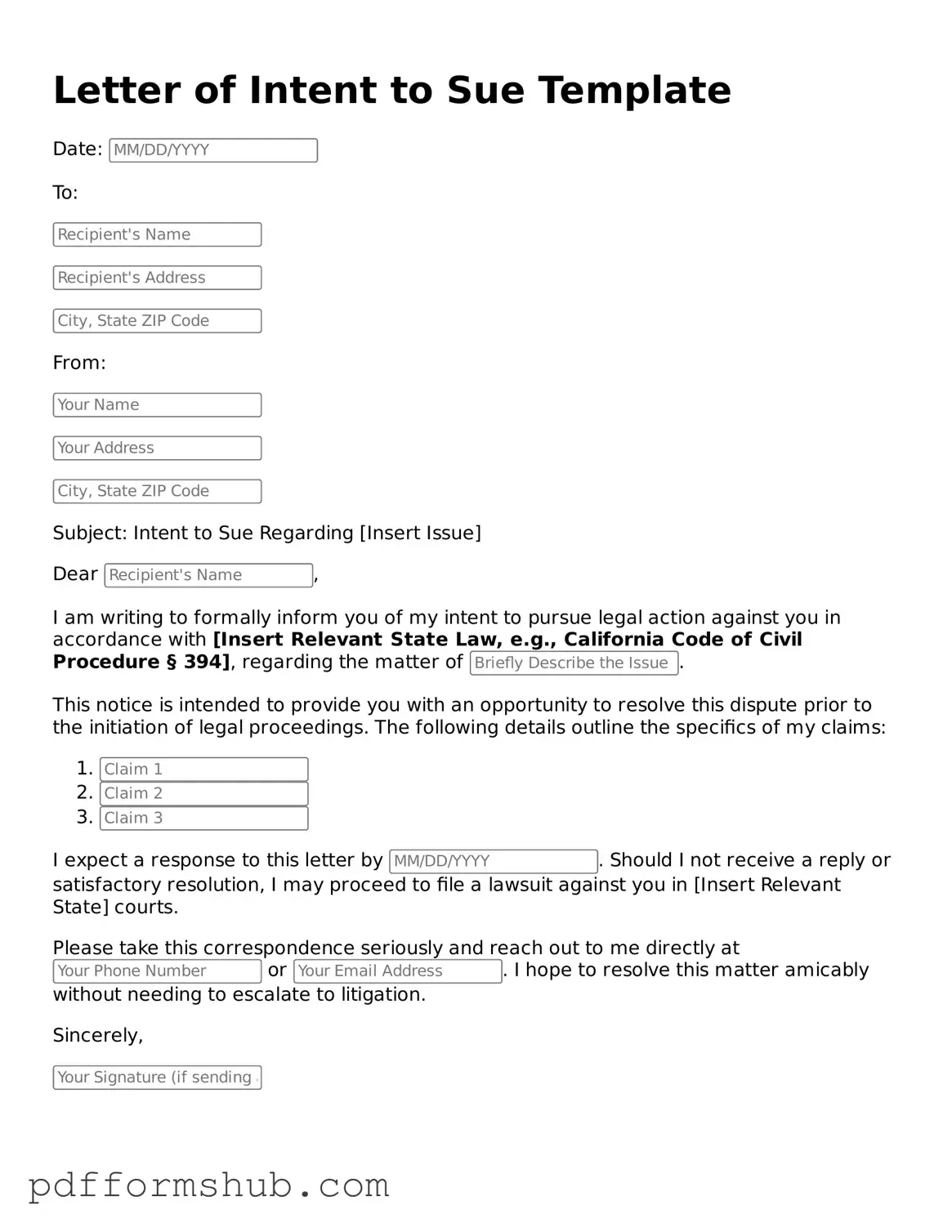In the realm of legal disputes, a Letter of Intent to Sue serves as a crucial preliminary step for individuals considering litigation. This document, while not a formal lawsuit, signals the intent to pursue legal action and often outlines the grievances that have led to this decision. It typically includes essential details such as the names of the parties involved, a description of the issue at hand, and any attempts made to resolve the matter amicably. By clearly articulating the reasons for potential legal action, the letter can help facilitate dialogue between the parties and may even encourage settlement discussions before the situation escalates to court. Understanding the components of this form is vital for anyone contemplating a lawsuit, as it not only establishes a record of intent but also sets the stage for the legal process that may follow. The Letter of Intent to Sue can thus serve as both a warning and a formal notification, providing the recipient with an opportunity to address the concerns raised before further legal steps are taken.
